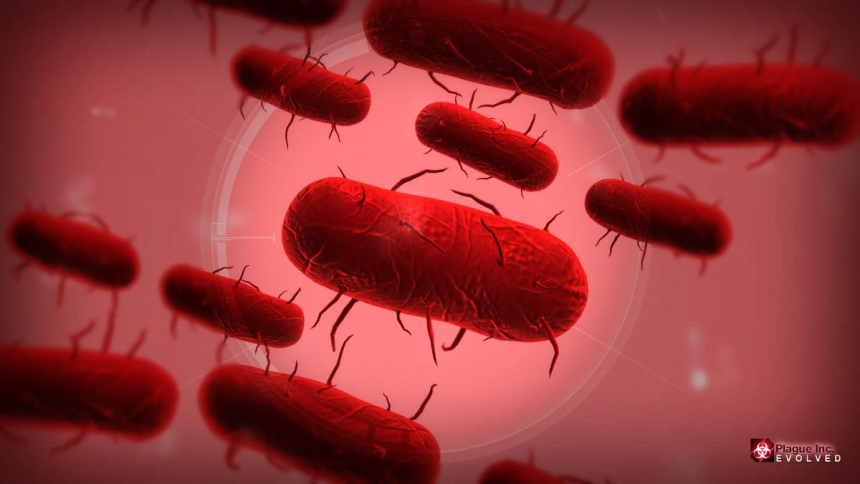Antibiotic resistance is a current and ever-increasing threat to global human health. Resistance evolves quickly because the leading treatment for bacterial infections is the administration of antibiotics at high concentrations; yet often, finding the correct, safe dosage for patients is not possible or takes too much time, allowing resistant strains to emerge. Resistant strains in antibiotic-free environments tend to have lower fitness than drug-sensitive strains and are out competed. It’s possible that we can take advantage of this phenomenon in treating microbial infections. CIDD researchers Christopher Baker, Matthew Ferrari, and Katriona Shea used mathematical models to test whether pulsed vaccination strategies can effectively exploit the competition between sensitive and resistant strains.
Baker, Ferrari, and Shea use stochastic models in which 1) the immune system responds to resistant and sensitive bacterial strains, 2) the immune system responds to bacterial strains can be resistant, partially resistant, or sensitive to antibiotics, or 3) limited resources drive competition between sensitive and resistant strains (no immune response). The wild type strain is able to mutate to become resistant in all models. Within these frameworks, different treatment schedules are employed, defined by: dose concentration (amount of drug administered each pulse), treatment frequency, pulse duration (fraction of time between pulses), and total treatment duration. Baker, Ferrari, and Shea tested how these aspects reduce pathogen burden and the probability of resistance emerging.
Results from models 1 and 3 were quite similar but model 2 showed interesting resistance-emergence dynamics. Constant, high drug doses led to low sensitive strain and high resistant strain abundance, but when drugs are pulsed, resistance is reduced. Within the pulsed strategy, high doses result in low probability of resistance but often the dose must be larger than the maximum tolerable dose. Reducing pulse duration also lowered the probability of resistance and probability of resistance peaks at intermediate doses. An important result of model 2 is a dose concentration threshold whereby changing the pulse duration with doses below the threshold reduce the probability of resistance without negatively impacting pathogen burden, meaning at higher doses, there is a trade-off between lowering pathogen burden concurrently with the probability of resistance.

Baker, Ferrari, and Shea demonstrated that there are a range of dose concentrations that decrease resistance and do not increase pathogen burden using a pulsed treatment strategy. Their results can be used to improve antibiotic treatment regimes to decrease resistance emergence with relatively simple new treatment regimes. The next step is to test these pulsed regimes experimentally and move closer to reducing the global antibiotic resistance crisis.
Synopsis written by Ellen Brandell
Figure Caption: (Figure 3a. from text) The probability of resistance and the total pathogen burden for different treatment strategies using the three-strain model. Here the total treatment window is 20 days and the treatment frequency is 1. Each circle is the average of 100,000 simulations, and the dashed lines connect treatments that have the same dose concentration. The ideal treatment strategies are in the bottom left of the figure, as these minimise the probability of resistance and the pathogen burden. However, these strategies require very high doses and are not always possible due to drug toxicity. The red dashed line at dose = 0.46 marks where altering the pulse duration (at or above 0.5) does not affect the pathogen burden, but does change the probability of resistance. At higher doses, there is a trade-off between lowering the pathogen burden and lowering the probability of resistance.
Main image: plague bacteria
Publication Details
Christopher Baker, Matthew Ferrari, Katriona Shea
Beyond dose: Pulsed antibiotic treatment schedules can maintain individual benefit while reducing resistance
Journal: Nature Scientific Reports
(2018) 8: 5866
DOI Reference




